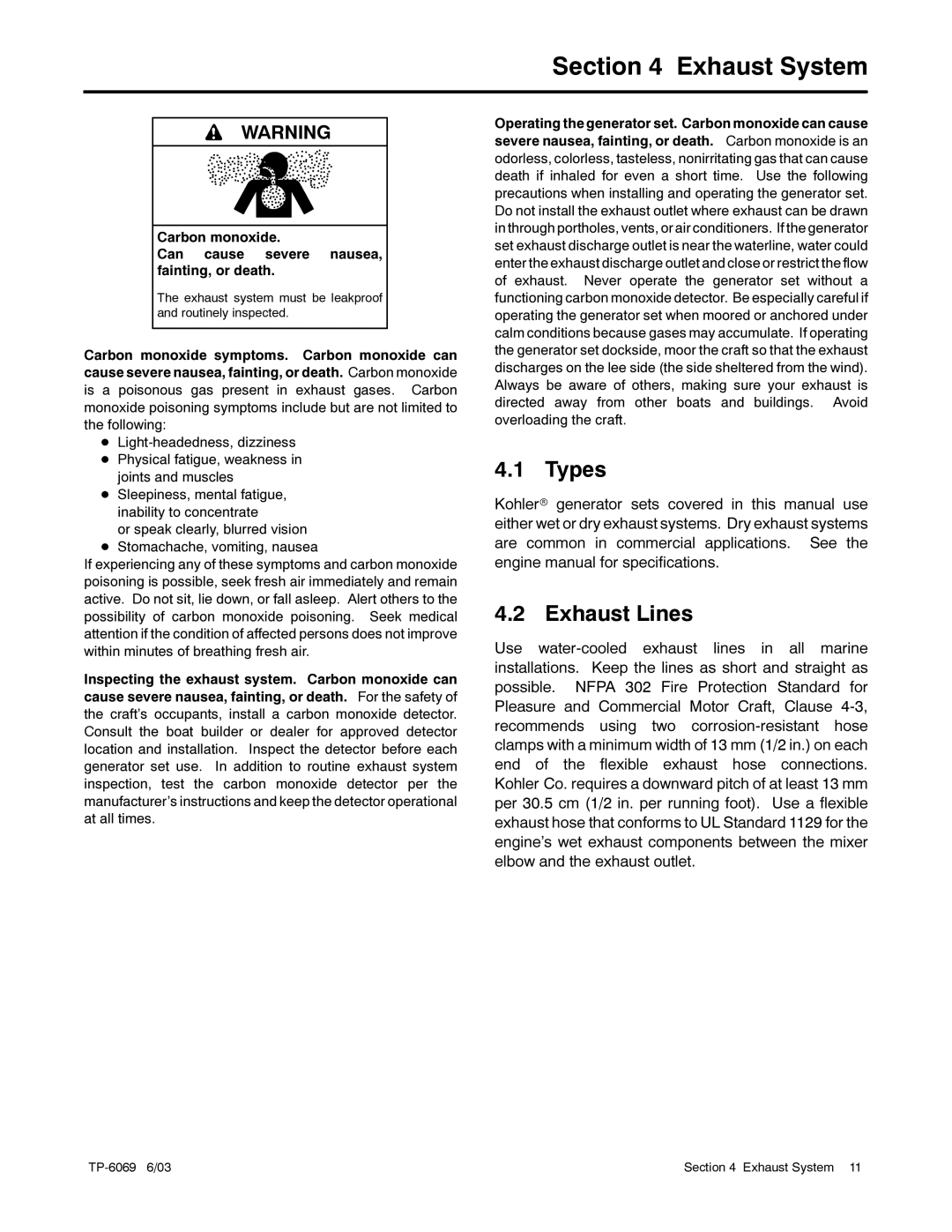
Section 4 Exhaust System
WARNING
Carbon monoxide.
Can cause severe nausea, fainting, or death.
The exhaust system must be leakproof and routinely inspected.
Carbon monoxide symptoms. Carbon monoxide can cause severe nausea, fainting, or death. Carbon monoxide is a poisonous gas present in exhaust gases. Carbon monoxide poisoning symptoms include but are not limited to the following:
D
DPhysical fatigue, weakness in joints and muscles
DSleepiness, mental fatigue, inability to concentrate
or speak clearly, blurred vision
DStomachache, vomiting, nausea
If experiencing any of these symptoms and carbon monoxide poisoning is possible, seek fresh air immediately and remain active. Do not sit, lie down, or fall asleep. Alert others to the possibility of carbon monoxide poisoning. Seek medical attention if the condition of affected persons does not improve within minutes of breathing fresh air.
Inspecting the exhaust system. Carbon monoxide can cause severe nausea, fainting, or death. For the safety of the craft’s occupants, install a carbon monoxide detector. Consult the boat builder or dealer for approved detector location and installation. Inspect the detector before each generator set use. In addition to routine exhaust system inspection, test the carbon monoxide detector per the manufacturer’s instructions and keep the detector operational at all times.
Operating the generator set. Carbon monoxide can cause severe nausea, fainting, or death. Carbon monoxide is an odorless, colorless, tasteless, nonirritating gas that can cause death if inhaled for even a short time. Use the following precautions when installing and operating the generator set. Do not install the exhaust outlet where exhaust can be drawn in through portholes, vents, or air conditioners. If the generator set exhaust discharge outlet is near the waterline, water could enter the exhaust discharge outlet and close or restrict the flow of exhaust. Never operate the generator set without a functioning carbon monoxide detector. Be especially careful if operating the generator set when moored or anchored under calm conditions because gases may accumulate. If operating the generator set dockside, moor the craft so that the exhaust discharges on the lee side (the side sheltered from the wind). Always be aware of others, making sure your exhaust is directed away from other boats and buildings. Avoid overloading the craft.
4.1 Types
Kohlerr generator sets covered in this manual use either wet or dry exhaust systems. Dry exhaust systems are common in commercial applications. See the engine manual for specifications.
4.2 Exhaust Lines
Use
Section 4 Exhaust System 11 |
